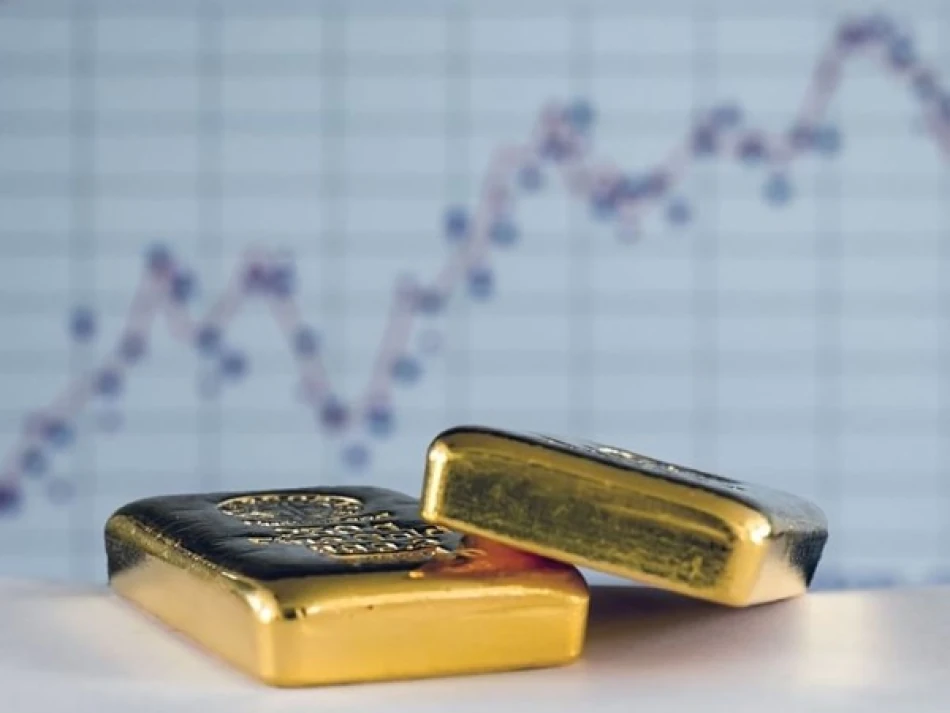
UAE Central Bank Boosts Gold Reserves by 26% in 5 Months, Bolstering Financial Resilience
UAE Central Bank's Gold Reserves Surge 26% as Nation Fortifies Economic Defenses
The UAE Central Bank has dramatically increased its gold holdings by nearly 26% in just five months, reaching AED 28.933 billion by May 2025—a clear signal that the Gulf nation is strengthening its financial resilience amid global economic uncertainty. This aggressive accumulation, coupled with record-breaking deposit growth across all banking sectors, positions the UAE as a regional safe haven while other economies grapple with inflation and geopolitical tensions.
Strategic Gold Accumulation Reflects Global Trend
The UAE's gold reserves jumped from AED 22.981 billion at the end of December 2024 to AED 28.933 billion by May 2025, representing a substantial 25.899% increase. Even on a monthly basis, the central bank added 0.49% to its gold holdings in May alone, building from AED 28.791 billion in April.
This move aligns with a broader global pattern of central bank gold buying that has accelerated since 2022. Countries like China, Turkey, and Russia have been aggressively accumulating gold reserves as a hedge against dollar volatility and sanctions risks. The UAE's strategy mirrors Singapore's approach of building substantial precious metal reserves to maintain monetary stability in an increasingly fragmented global financial system.
Banking Sector Shows Unprecedented Liquidity Growth
Demand Deposits Hit New Records
The UAE's banking sector is experiencing remarkable liquidity expansion, with demand deposits surging to over AED 1.166 trillion by May 2025, up from AED 1.109 trillion at year-end 2024. This growth reflects both increased economic activity and the UAE's success in attracting international capital flows.
The deposit composition reveals a balanced mix of local and foreign currency holdings: AED 892.577 billion in local currency and AED 274.329 billion in foreign currencies. This diversification suggests sophisticated risk management by both institutions and depositors.
Savings and Time Deposits Signal Long-term Confidence
Savings deposits climbed to AED 359.57 billion by May, compared to AED 317.48 billion in December 2024, indicating growing household wealth and confidence in the banking system. The majority—AED 305.508 billion—remains in local currency, demonstrating trust in the dirham's stability.
Most significantly, time deposits crossed the trillion-dirham threshold for the first time, reaching AED 1.013 trillion. This milestone reflects institutional and corporate confidence in longer-term UAE economic prospects, with AED 614.854 billion in local currency and AED 398.348 billion in foreign currencies.
Market Implications and Investment Outlook
For investors and financial markets, these developments signal several key trends. The UAE's gold accumulation strategy provides a buffer against potential currency wars and trade disruptions, making it an attractive destination for risk-averse capital. The record deposit growth indicates robust liquidity that could fuel lending and economic expansion.
International investors should note that the UAE's approach differs from traditional petrodollar recycling. Instead of purely dollar-denominated investments, the nation is building a more diversified reserve base that includes significant gold holdings—a strategy that proved prescient during recent global banking stress episodes.
Regional Leadership in Financial Stability
The UAE's monetary policy stance contrasts sharply with other regional economies facing currency pressures. While countries like Turkey and Egypt have struggled with inflation and currency volatility, the UAE's measured approach to reserve diversification and banking sector growth positions it as the Gulf's financial stability anchor.
This financial strength reinforces the UAE's ambitions to become a global financial hub, competing directly with Singapore and Hong Kong. The combination of substantial gold reserves and deep banking liquidity provides the foundation for expanded international banking services and cross-border financial flows.
Most Viewed News

 Layla Al Mansoori
Layla Al Mansoori






